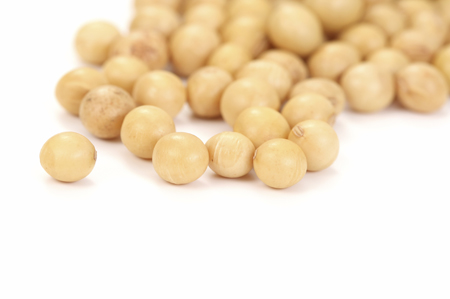U.S. to Favor Soybeans in Trade War Aid for Farmers: Bloomberg
Category: Grains

(Reuters) – The Trump administration is considering direct payments to U.S. farmers of $2 per bushel for soybeans as part of an aid package to offset the trade war with China, Bloomberg reported on Tuesday, an offer that could encourage more soy planting despite record supplies.
China is the world’s top soybean importer, and for the second year in a row there is little prospect that it will buy much U.S. soy after an escalation in a trade war that has left U.S. farmers sitting on record volumes of crops.
The soy payments would be far more than the 63 cents per bushel that Bloomberg said is under consideration for wheat and 4 cents per bushel for corn, as part of the up to $20 billion in aid meant to offset U.S. farmers’ losses from the trade war.
China bought some 60% of U.S. soy exports in 2017 but curbed purchases last year when U.S. President Donald Trump imposed tariffs on Chinese goods, prompting China to retaliate with tariffs on U.S. soy, pork, corn and other products.
The U.S. Department of Agriculture said in a statement that details on the aid package would be forthcoming and urged farmers to make planting and production decisions based on market signals “rather than some expectation of what a farming support program might or might not look like based on inaccurate media stories.”
The USDA said “the program is being designed to avoid skewing planting decisions one way or another.” The agency did not address the figures in the Bloomberg report.
One lobbyist source said the plan was likely to be announced this week.
Caitlin Eannello, spokeswoman for the National Association of Wheat Growers, told Reuters that 63 cents per bushel for wheat is the number the organization has been hearing.
Farmers across the central United States are in the midst of planting corn and soybeans and fighting against rains that are delaying their progress. Growers who have not yet planted corn could switch acres to soybeans to cash in on the U.S. aid payments, if the program is based on 2019 acreage.
“It’s an extremely sensitive time, especially in light of the fact that so much of the country is way behind on planting,” said Monte Peterson, a board member of the American Soybean Association who grows soy and corn in Valley City, North Dakota.
Earlier this month, Trump directed the USDA to work on a new aid plan for farmers as Washington and Beijing intensified their 10-month-old trade war by raising tariffs on each other’s goods.
Agriculture Secretary Sonny Perdue last week said the new aid package was likely to be $15 billion to $20 billion, exceeding the up to $12 billion in aid rolled out last year to farmers. Most of it was likely to be direct payments, sources told Reuters.
The aid was seen encouraging farmers to plant more soy, potentially worsening a supply glut that last week drove soy futures to their lowest prices in more than a decade.
“I’d be quite afraid that the corn planters would shut down and the soy planters would go gangbusters,” Peterson said.
Chicago Board of Trade soybean futures turned lower on Tuesday after the Bloomberg report.
“That (proposed $2 bean payout) is a pretty enticing carrot, and that tells me that they (farmers) are going to try to get as many bean acres in as possible, at the expense of corn,” said Matt Connelly, analyst at the Hightower Report in Chicago.
“The reason beans (futures) went south is, they saw that $2 a bushel, and that will entice them to plant beans until the July 4th weekend.”
The USDA said on Monday that 49% of the U.S. corn crop has been planted, the slowest pace on record, based on data going back to 1980. Soybeans were 19% planted.
The USDA last year announced its aid program in July and paid $1.65 per bushel for soybeans, 14 cents per bushel for wheat and 1 cent per bushel for corn. The agency determined the payment rates according to estimated trade related losses.
Negotiations between the United States and China have soured dramatically since early May, when Chinese officials sought major changes to the text of a proposed deal that the Trump administration says had been largely agreed.
The dispute between the world’s two largest economies has cost billions, roiled global supply chains and rattled financial markets. American farmers, who helped carry Trump to his surprise 2016 election win, have been among the hardest hit.




